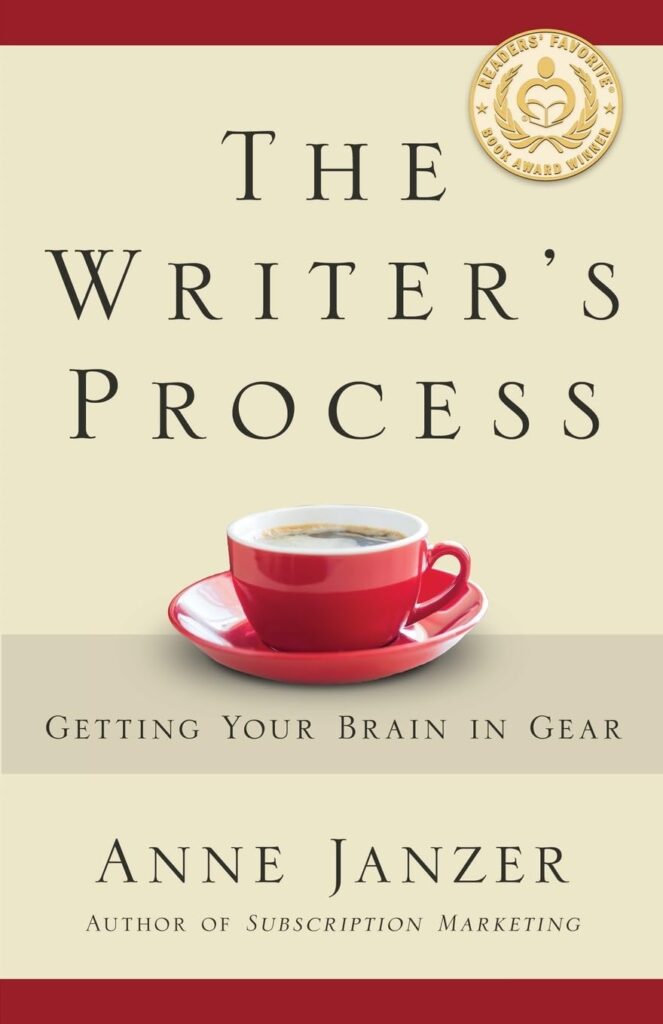Price: $26.00 - $19.27
(as of Mar 21, 2025 00:14:27 UTC – Details)
The instant New York Times bestseller
Quanta and Fields, the second book of Sean Carroll’s already internationally acclaimed series The Biggest Ideas in the Universe, is an adventure into the bare stuff of reality.
Sean Carroll is creating a profoundly new approach to sharing physics with a broad audience, one that goes beyond analogies to show how physicists really think. He cuts to the bare mathematical essence of our most profound theories, explaining every step in a uniquely accessible way.
Quantum field theory is how modern physics describes nature at its most profound level. Starting with the basics of quantum mechanics itself, Sean Carroll explains measurement and entanglement before explaining how the world is really made of fields. You will finally understand why matter is solid, why there is antimatter, where the sizes of atoms come from, and why the predictions of quantum field theory are so spectacularly successful. Fundamental ideas like spin, symmetry, Feynman diagrams, and the Higgs mechanism are explained for real, not just through amusing stories. Beyond Newton, beyond Einstein, and all the intuitive notions that have guided homo sapiens for millennia, this book is a journey to a once unimaginable truth about what our universe is.
Publisher : Dutton (May 14, 2024)
Language : English
Hardcover : 304 pages
ISBN-10 : 0593186605
ISBN-13 : 978-0593186602
Item Weight : 12.8 ounces
Dimensions : 5.7 x 1 x 8.5 inches
Customers say
Customers find the book a good value and worth their time. They describe the Standard Model and Quantum Field Theory as monumental intellectual achievements that disseminate fantastic modern ideas on physics. The book is described as an enjoyable, rewarding read by readers. While some find the math and logic notation clear and straightforward, others find it difficult to understand.











Space Nerd –
Very thorough
This is probably a difficult read for anyone just getting into quantum physics, but it’s a “fair” difficult. There is a lot of unfamiliar math/logic notation, but the author does a great job of explaining it all. This book requires a good bit of deliberate study, but it’s rewarding and worth the effort.
Vaughn McClain –
Excellent treatment of a complicated subject
This is the book on quantum mechanics and field theory that I have been waiting for. Unfortunately, I am limited to giving “Quanta and Fields” only 5 stars. The book is excellent! A complex subject is presented here in a lucid and accessible narrative with the relevant equations included. The symbols and components of the equations are clearly explained. The inclusion of equations in “Quanta and Fields” was fully disclosed by Professor Carroll in his podcasts and interviews prior to the book being available for purchase. A “lucid and accessible narrative” by the author however does not mean that the concepts involved are easy to comprehend. Quantum mechanics is complicated and counterintuitive. If a person has a visceral aversion to mathematics perhaps a simplified popular science treatment of the subject would be more appropriate, but the inclusion of equations in this book is not a legitimate basis for a critical review. Professor Carroll has posted an excellent tutorial on YouTube that covers many of the concepts covered in the book in Episode 275 of his Mindscape podcast series. I highly recommend watching it. But don’t be intimidated either by the subject matter or the equations. “Quanta and Fields” is worth the investment of your time.
Gary Moreau, Author –
A glimpse under the quantum tent.
Carroll does for physics what Carl Sagan did for astronomy and planetary science in the early ’80s and he certainly shares the enthusiasm that so defined Sagan. He bridges the gap between the professional scientist and lay person who is looking for a peek under the tent rather than a PhD.In this volume the subject is quantum mechanics, where “it is the wave function that represents reality.” As in his prior work, the author’s approach involves augmenting the narrative with all the relevant formulas, but not forcing the reader to actually have the skill and knowledge to solve the equations presented. The result is not exactly “Moby Dick” in terms of reading ease, but with some cognitive effort most of us should be able to get by with a basic knowledge of mathematics and scientific notation, and a good dose of patience.If you have read anything about quantum mechanics Carroll does address the most obvious questions. One of the most well-known characteristics of quantum systems is that its properties change dramatically when they are measured. “The linchpin of quantum mechanics seems to be this: what exists is not what is seen.” This raises the intuitive question, of course, “Then how do we know?” Well, there is an answer, or at least a rational perspective.Another popular misconception he challenges is that the quantum world is the world of the small – the sub-atomic. “In fact, quantum mechanics applies to the whole world, big and small alike.” In other words, quantum physics is scalable.Einstein, according to Carroll, believed that quantum mechanics was somehow incomplete and couldn’t be the final answer. While he admits that future discoveries could prove it all wrong, Carroll suggests that “According to our current best understanding, quantum fields are the bare stuff of reality.” Still, he admits, referring to the Core Theory, “…nobody expects it to be the ultimate beautiful Theory of Everything, if there is such a thing.”I did find that the formulas were more critical to this book than they were in the previous book of Carroll’s I read. I couldn’t just gloss over them, as I had previously, and come away with any real understanding. And it doesn’t help that the language of quantum mechanics is so jargon-intensive, or the fact that physicists seem to enjoy naming things after each other, which makes a lot of the naming conventions less intuitive than they would be if they were more function-centric.It is a great book if you just want to understand where the physicists are in their real understanding of reality. My own take is that they have journeyed a very long way but still have a very long way to go, as Carroll is the first to point out. They won’t be hanging up their lab coats any time soon. (Probably not ever.)I think marine biologist Rachel Carson (1907-1964) said it best in her 1962 book, “Silent Spring”. She wrote, “In nature, nothing exists alone.” And so, I believe, it is with all of reality, giving rise to the apt metaphor known as the butterfly effect. Nothing exists in isolation and figuring out all the inter-relationships and their impact on each other may well be an insurmountable task. (On balance, I think that is a very positive truth. I, for one, am reassured by it.)I’ve always believed that science and philosophy are two sides of the same coin and each discipline would gain immensely working more closely with the other. Siloes of knowledge, in my mind, are never the best place to find truth. I was a little surprised, therefore, after finishing the book, to learn that Carroll is a professor of natural philosophy. That does explain some of the narrative’s point of view but I would encourage him to go even further in merging the two disciplines in his books. I think there is much to be learned in the overlap.All told, a very well-written book by a very enthusiastic and lucid author. Just don’t wait until you are falling asleep to pick it up.
Eddye Sylvyr –
Excellent read so far.
Very knowledgeable and he presents the information well. A bit heavy on the math but the math is why this all works so well. Recommended if you want to know more about this exciting field of science.
Wayne Reich –
Fantastic – especially if you’re willing to put in the work!
I’m really enjoying volume two of the series. I admit that this is a hard topic for me to fully understand, but I am so glad that Carroll makes the effort to show me the math. The equations and the author’s explanations make clear the difference between what I can grasp and what I need to work on. I’m reading carefully, even reading sections multiple times, and it’s worth putting in the work to better understand the Biggest Ideas in the Universe. Highly recommended for people who enjoy thinking about the underlying principles of the physical universe!
SBGGeorge –
Great for intermediate study
I’ve read a few books on this subject. Some provided an easy introduction that gave the average non-physicist an idea of what quantum mechanics is all about. Others were heavy mathematical works impenetrable to anyone without graduate-level mathematics. This book probably isn’t for anyone looking for either of those. I did think it was the best book I’ve found at an intermediate level, however. If you have some mathematical sophistication (not thrown by calculus) and have read one or more of the easy books, but want to understand more, this is for you. I’ve read the easy ones and struggled through a couple of the hard ones without real enlightenment, but after a careful reading of Quanta and Fields, I do think I have a much better understanding of the subject.I’ve read a few books on this subject. Some provided an easy introduction that gave the average non-physicist an idea of what quantum mechanics is all about. Others were heavy mathematical works impenetrable to anyone without graduate-level mathematics. This book probably isn’t for anyone looking for either of those. I did think it was the best book I’ve found at an intermediate level, however. If you have some mathematical sophistication (not thrown by calculus) and have read one or more of the easy books, but want to understand more, this is for you. I’ve read the easy ones and struggled through a couple of the hard ones without real enlightenment, but after a careful reading of Quanta and Fields, I do think I have a much better understanding of the subject.
Issac T –
Sean Carroll writes the best books on cosmology and quantum mechanics.
Amazon Customer –
Prazo de entrega correto e boa qualidade do produto.
Anne –
University math classes in the 90’s were all about the “shut up and calculate” philosophy to learning. I had no idea WHY I was learning eigenstates, vectors, differentials etc etc. Out of frustration I pivoted from schrodeingers cat to an all out career in cats and instead of following physics and math, became a veterinarian. At veterinary school I had a clearly defined WHY.Sean Carroll’s books are the WHY I needed. And they are the real deal. I’ve read most of his books, listen to his podcasts and watched all of his wondrium courses. His unique way of telling the story of the universe through the incorporation of both excellent, vivid text and the most concise and necessary mathematics is masterfull. I don’t know about you, but I learn best through story and am motivated when I understand the WHY. These books are page turners…which twin will be older? Is the cat sleeping or awake? …and may even have you reaching for that old dusty matrix algebra text. But it’s not required.After graduating from university 30 years ago I recently enrolled in a second year modern physics class, and with the knowledge gained from Sean carrolls books, and some brush up on my math, I felt more than prepared. This book, and his others, provides an understanding that can only be obtained by marinating good prose with clear and concise equations. Not one or the other. IMHO most university math classes miss the story, leaving students lost in the equations.In this book (and his others) math becomes a useful tool to solve problems, answer intriguing questions and reach deeper understanding. It’s so much easier, and motivating, to do the hard work of mathing, within this context. Dare I say, the math becomes easier, and who doesn’t need that?I’d recommend these books to any physics student wanting a clear overview of the subject. and anyone interested in the WHY of our universe.
daniel armesto –
Many popular science books adhere to the maxim of not including any mathematical expression so as not to scare readers. That is frustrating to me, as it only leads to an impoverishment of the subject: they show us the frame of a painting, but not the painting itself.Mathematics should not be hidden, but explained. And this is precisely what Carroll does. And he does it very well.100% recommended.
Amazon Customer –
Etre étudiant en physique est parfois très frustrant. On n’entend pratiquement pas parlé de relativité ni de physique quantique lors des premières années. On a accès à de la vulgarisation, qui permet de patienter avant de comprendre réellement les idées fondamentales.La vulgarisation peut permettre de comprendre plutôt bien la relativité. Pour la physique quantique, c’est déjà plus compliqué. En ce qui concerne la théorie quantique des champs, c’est encore plus frustrant. J’ai personnellement dû attendre d’être en master pour en comprendre convenablement les idées de base. Souvent, la vulgarisation de la théorie quantique des champs est très peu satisfaisante (la seule exception que je connaisse est le livre de Feynman, lumière et matière, mais son approche de la théorie quantique des champs est particulière.) On nous parle de particules virtuelles, de vide quantique dans lequel ces particules ne cessent d’apparaitre et de disparaitre, sans qu’on comprenne vraiment de quoi il s’agit.L’approche de Sean Carroll est différente, puisqu’il tente de faire comprendre les vrais concepts, et a du coup recours à des mathématiques, mais sans prétendre que lire son livre vous permettra de résoudre de vrais problèmes physiques. En résumé, il tente de vous faire comprendre aussi profondément que possible les idées sous-jacentes, sans essayer de faire de vous des physiciens. C’est un livre qui est donc adressé à des étudiants en physique qui sont impatients de comprendre les idées fondamentales de la physique quantique, ou encore à des personnes qui ont un bon bagage scientifique mais qui ne sont pas physiciens.Cependant, Sean Carroll ne parvient pas tout à fait à aller aussi profondément dans la présentation de la théorie quantique des champs qu’il ne l’a fait pour la relativité dans le tome précédent. J’aurais aimé par exemple qu’il explique un peu plus en détail comment on dérive les graphes de Feynman à partir des différents termes du lagrangien. Le problème étant que cela devient vite très technique…